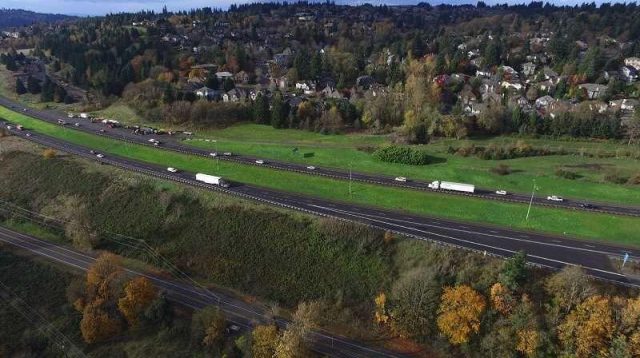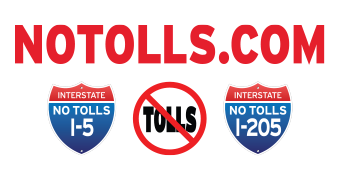“They go through a process and they don’t really care. That’s the bottom line.”
By Corey Buchanan Mar 8, 2023 (Portland Tribune)

Major highways looping around the Portland metro area are seriously being considered for tolls as part of a regional transportation funding solution.
Like some of its counterparts regionally, the Lake Oswego City Council expressed dismay about the Oregon Department of Transportation’s current tolling plan and a recent environmental assessment during a meeting Tuesday, March 7.
ODOT is moving forward with its plan to toll all lanes of I-205 from the Abernethy Bridge to the Tualatin River Bridge — followed by broader tolling regionally — and the environmental analysis is a step in that process. The earliest tolls could begin is 2024.
The purpose of tolling is to reduce traffic congestion on local freeways and to raise money for infrastructure projects such as I-205 improvements and seismically upgrading the Abernethy Bridge. ODOT intends to add a third travel lane on I-205 from Stafford Road to OR 213. ODOT said the project would generate $105 million in economic benefits annually from 2027 to 2045, foster up to 50% faster travel times in the evening and up to 25% faster travel times in the morning, and reduce air pollution by as much as 9-12%.
However, many local representatives in the region are concerned that the tolling will lead to traffic diversion onto local streets as travelers avoid paying the tolls.
At the meeting, ODOT staffer Mandy Putney stated that the two local intersections that would be impacted by diversion and therefore spur the department to make improvements include McVey Avenue and Highway 43 and the Stafford Road and Rosemont Road roundabout. In turn, ODOT plans to add improved pedestrian crossings and signals at McVey/Highway 43 and a rectangular rapid flash beacon (for the sake of pedestrian safety) at the roundabout. The department studied 50 intersections Tualatin, Lake Oswego, Gladstone and West Linn as part of the analysis, and 14 were determined to require mitigation.
“Our analysis shows that there are limited impacts in jurisdictions. And for those impacts we’re required to do mitigation to reduce those impacts or solve those impacts,” Putney said.
City councilors generally felt that those proposed improvements were insufficient to address the potential adverse effects of tolling and that the department should do more. “I think that’s completely insufficient for that area,” City Councilor Rachel Verdick said after hearing about the rapid flash beacons at the Stafford roundabout. “I think we have a traffic issue there along with a pedestrian issue.”
Further, multiple councilors perceived traffic to already be an issue along Highway 43 near the McVey Avenue intersection.
Mayor Joe Buck added that he believed tolling would not only impact major thoroughfares but could also hinder local neighborhoods.
“There are impacts and it’s not just to the through traffic. It’s to the neighborhoods that abut it and how folks access that system. We’re asking ODOT to look beyond very technical requirements of the EA (environmental assessment) and think as a good community partner, as a state partner, working with us to make these improvements — especially on roadways that are ODOT’s to begin with and haven’t been invested in in a long time,” he said.
Councilor Aaron Rapf felt that there were better and less negatively impactful ways to fund infrastructure projects than tolling. Further, Council President John Wendland posited that these meetings with local jurisdictions amounted to the department checking a box.
“They go through a process and they don’t really care. That’s the bottom line,” he said.

